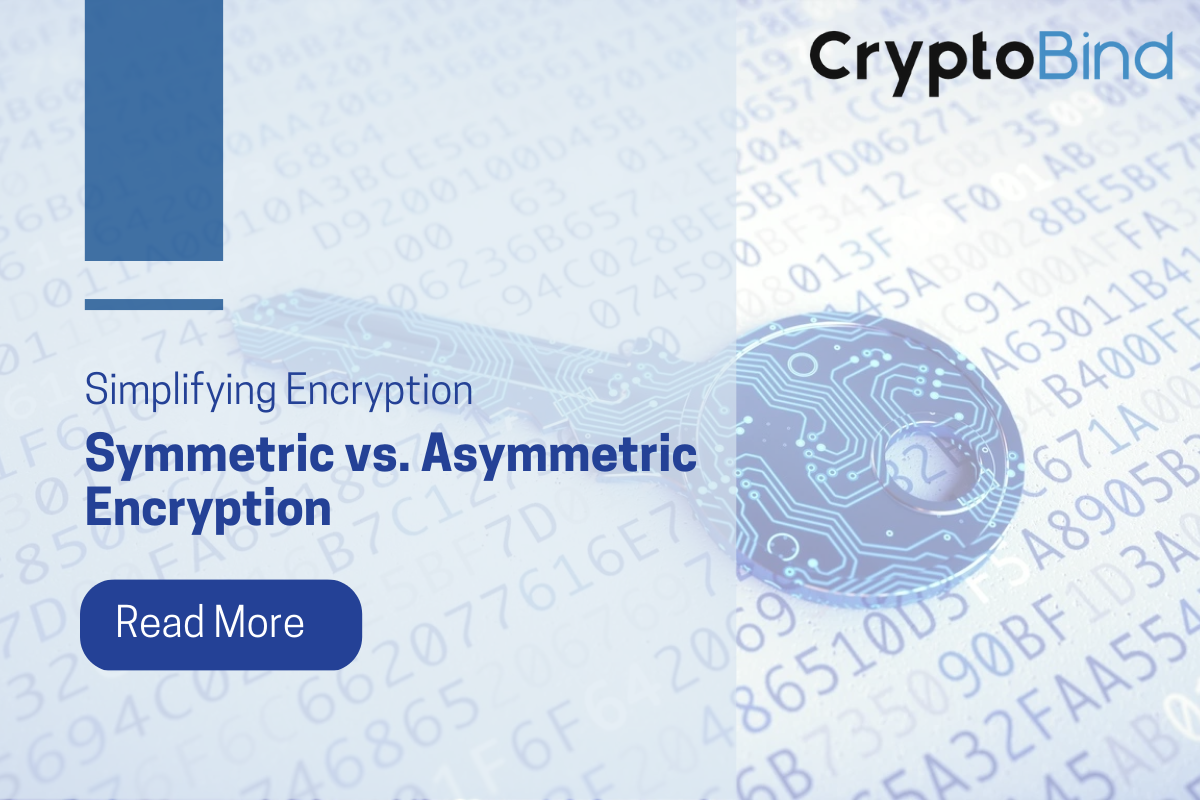Symmetric and Asymmetric Encryption – The Difference Explained
A business’s intellectual property, such as client and employee information, a business plan, and product descriptions, all qualify as priceless data. To protect your organization’s confidentiality and integrity, these sensitive details must always be kept secure.
You cannot operate without this data, which is the foundation of your company. There are no restrictions on the amount of damage hackers can cause if they are able to obtain this information.
One of the best ways to secure data is through data encryption. So, let’s understand why it is so important.
What is Encryption?
Encryption is a component of Cryptography, the most effective and widely used data security technique. The encryption process involves converting the data into a different form known as ciphertext, while the original data to be encrypted is known as plaintext. The plaintext is fed into an algorithm with an encryption key, which produces ciphertext. With a valid key, this ciphertext can be decrypted.
An Encryption procedure fulfils the fundamental security requirements. Encryption operates in both symmetric and asymmetric modes, like cryptography. In symmetric encryption Both the sender and the receiver use the same secret key to encrypt and decrypt data. In contrast, the asymmetric approach makes use of two distinct keys: public and private. Governments, the military, and civilian systems all frequently use encryption to protect sensitive data.
Customer personal and banking information is highly vulnerable to theft; encrypting such files is always advantageous in the event that the security system is unable to safeguard the sensitive information. Although encryption initially appears to be a difficult technique, various data loss prevention software handles it effectively.
In order to protect our data while it is in use, at rest, or in motion, encryption should be used. Symmetric and Asymmetric encryption are the two main types, and this article will compare them.
Symmetric Encryption:
Symmetric encryption encrypts and decrypts messages using the same key. It does not scale well because the entire system depends on keeping the key a shared secret, i.e., that it must be securely shared with the recipient so that only they can use it to decrypt the message.
Symmetric encryption suffers from key exhaustion issues, and without proper key hierarchy maintenance or effective key rotation, each usage may leak information that an attacker could use to reconstruct the secret key. As a result, it’s frequently used in combination with asymmetric encryption, which we’ll look at in the following section.
Asymmetric Encryption:
Asymmetric encryption is a complicated type of encryption. It is complicated because it uses two cryptographic keys to secure data. These keys are known as the Public Key and the Private Key. As the name implies, the public key is available to anyone who wishes to send a message. The private key, on the other hand, is kept in a secure location by the owner of the public key.
The information to be sent is encrypted using the public key. To do this, it employs a particular algorithm. However, it is only decrypted by the receiver’s private key, which is in his or her possession. These two processes are both driven by the same algorithm. In contrast to symmetric encryption, this type of encryption provides a higher level of security because the private key is kept private and not intended for sharing. It is also a much more scalable technique.
Symmetric vs. Asymmetric Encryption:
There are five key distinctions between symmetric and asymmetric encryption, which we’ll go over in more detail below. Some of these variations have to do with the kinds of keys that are used, while others have to do with how long it takes the encryption techniques to compute.
Which is more secure when we discuss symmetric vs. asymmetric encryption? While symmetric encryption is quicker, asymmetric encryption is more secure. They can be used separately or together depending on the task at hand and are both extremely effective in different ways.
A more thorough comparison of symmetric and asymmetric encryption can be found in the table below:
Applications of Symmetric vs. Asymmetric Encryption:
One of the most important applications of asymmetric encryption is secure internet communication. Users can encrypt messages with public-key cryptography using the recipient’s public key, ensuring that only the intended recipient can decrypt and read the message. This technology is frequently used for secure email, file transfer, and online financial transactions.
Symmetric encryption, on the other hand, is frequently used for large-scale data encryption key management. For large amounts of data, symmetric encryption is much faster and more efficient than asymmetric encryption because it uses a single key for both encryption and decryption. For example, when a user downloads a large file from a website, the file is frequently encrypted before transmission using a symmetric key, and the key is shared with the user via an asymmetric encryption process.
Another common use of symmetric encryption is to secure data at rest. In this case, the data is encrypted with a symmetric key, which is then securely stored. The key is used to decrypt the data when it is required. This method is commonly used to encrypt sensitive data on hard drives, databases, and other storage devices.
Overall, both asymmetric and symmetric encryption are important components of modern digital security. Users and organizations can protect their data and communications from unauthorized access and data breaches by combining these techniques.
In conclusion, both symmetric and asymmetric encryption are crucial:
Almost all of the key ideas relating to symmetric vs. asymmetric encryption have been covered. The debates over “symmetric key vs. asymmetric key” and “what is the difference between symmetric and asymmetric encryption” should be settled by this point. Despite the fact that they are both very different from one another due to different mathematical constructions, they have both found use in a variety of situations. Asymmetric encryption, on the other hand, is used in conjunction with digital signatures while symmetric encryption is used to protect file content or enter the picture in disc encryption. The combination of both of these techniques is used in a variety of other situations.
Contact us today to learn more about our Encryption solutions:
We provide both column-level and application-level Encryption. Our product categories include Hardware security modules, Aadhaar Data Vault, Cloud HSM, Key management solutions, Tokenization, Encryption and Authentication solutions. Contact Us:
Sales@jisasoftech.com
+91-9619222553








